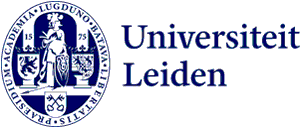In Memoriam - Professor Bert Peletier
On December 16, 2023, our respected and beloved former colleague prof.dr.ir. Bert Peletier passed away.

From 1977 until his retirement, Bert worked as professor of Analysis and Applied Mathematics. Since 1999 he has been a member of the Royal Netherlands Academy of Arts and Sciences. In 2013 he was appointed Knight in the Order of the Netherlands Lion. He was also co-founder of the interdisciplinary Lorentz Center in Leiden.
Bert was an eminent mathematician with a broad interest. He received great international esteem for his work in ordinary and partial differential equations and non-linear analysis. His boundless enthusiasm and creativity have inspired both young mathematicians and colleagues to integrate techniques from the theory of ordinary differential equations (ODEs) with those of partial differential equations (PDEs). Bert merged mathematical interests with applications, such as flows in porous media. An engineering field really, with nice nonlinear versions of classical PDEs, notably the porous medium equation, and more messy equations for partially saturated flows.
With Hans van Duijn he introduced these topics in Leiden. Collaborations with AKZO provided for a similar source of problems in the context of coating flows. On the theoretical side there was the link with Paris and Minneapolis and the variational approach to semi-linear elliptic boundary value problems and their bifurcation diagrams.
A special art mastered by Bert was to use intricate analysis of ODEs to understand the behaviour of PDEs. A prototypical example was his study of the bifurcation picture for Brézis-Nirenberg type problems, in which linear diffusion is balanced by nonlinear growth, with a natural parameter describing their relative strengths. Bert's ODE results on radial solutions of this equation had fundamental impact on the international community working on blow-up phenomena and the appearance of singularities associated with critical Sobolev exponents and lack of compactness in the variational formulation. He also initiated ground breaking research for systems of such equations with an indefinite variational structure.
Bert's work on similarity solutions of the porous medium equation guided the development of theory for nonlinear degenerate diffusion equations. Much of Bert's early work with his PhD students concerned the qualitative properties of solutions of such equations, in particular the behaviour of free boundaries, separating the liquid and solid phases in the Stefan problem, and dry, wet and saturated regions in fluid flows in porous media.
One of the first European networks in mathematics was initiated by Bert, building a community with a common interest in nonlinear PDEs and free boundary problems in which pure and applied researchers interacted. When China and later the Sovjet Union opened up, these networks hosted many renowned researchers from the East, in workshops and as regular visitors.
As a mathematician Bert was fascinated by the pattern formation in higher order reaction-diffusion equations studied by researchers at the physics department, and he contributed much to the understanding of these phenomena with his analysis of steady state and travelling wave solutions. This collaboration also led to new initiatives, one of them being the previously mentioned Lorentz Center, founded with Wim van Saarloos amongst others. Much earlier, Bert's advisory role had a strong impact at the Mathematisch Centrum (later Centrum Wiskunde & Informatica) in the Watergraafsmeer (Amsterdam), where many developments in the field of reaction-diffusion equations and mathematical biology were initiated.
Bert has contributed greatly to the mathematical foundation of research into new medicines, research he was still working on. He collaborated with Meindert Danhof, Leiden professor of Pharmacology, on dynamics in pharmacology. After his retirement he expanded his horizons further: he worked and published on fluid uptake in plants with Kees Libbenga, Leiden professor of General Botany. His last efforts concerned corona models, on which he gave talks to smaller audiences visiting the internet cafe he tended for his local church during and after the lockdowns.
In applied analysis Bert was a driving force, sharing his insights with younger and older generations, often over coffee and lunch, using sugar cube wrapping paper and napkins for first calculations and expositions. Throughout his fruitful career he inspired many (under) graduate students and postdocs who proceeded in the footsteps of his work.
Bert was a warm-hearted man with sincere interest for colleagues and students. He was always ready with a sympathetic ear, well-thought-out advice and, if possible, practical support. We will miss him very much.
Text with thanks to G.J.B. (Jan Bouwe) van den Berg, J. (Joost) Hulshof and R.C.A.M. (Rob) van der Vorst, former PhD candidates of Bert Peletier and currently professors at the Vrije Universiteit Amsterdam.
